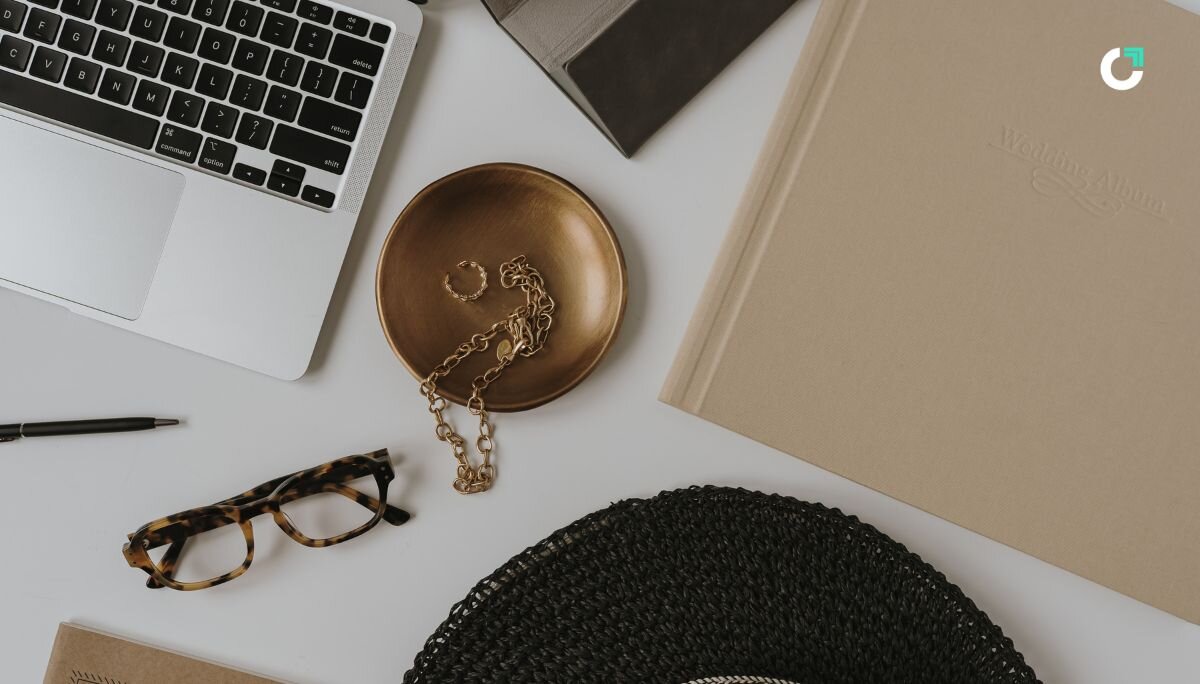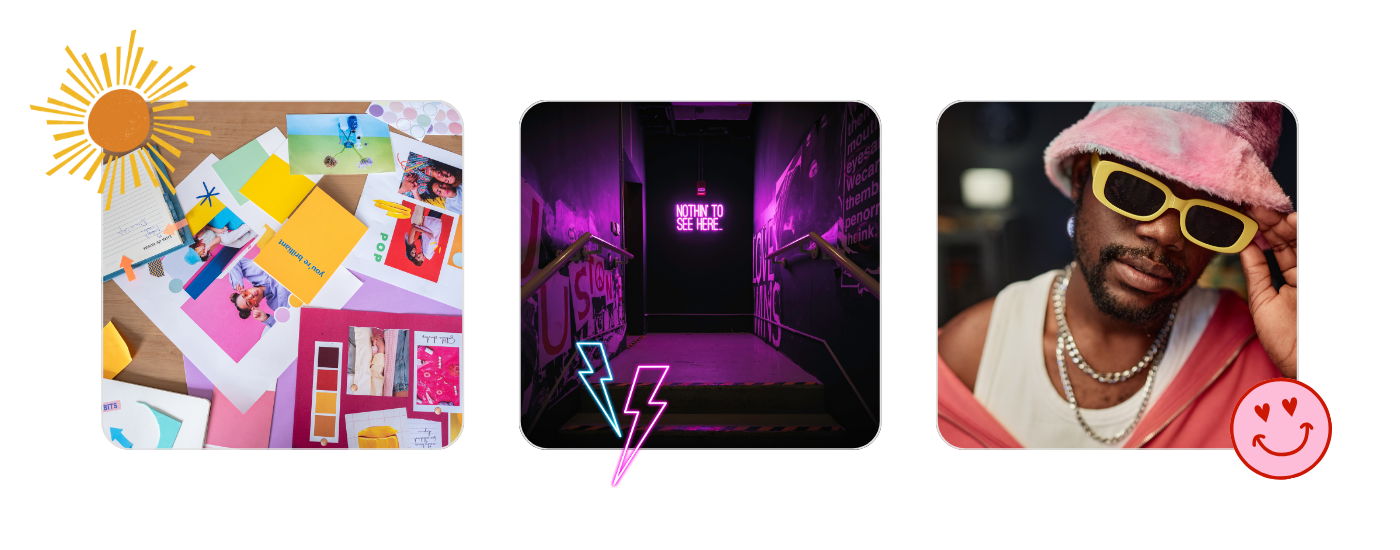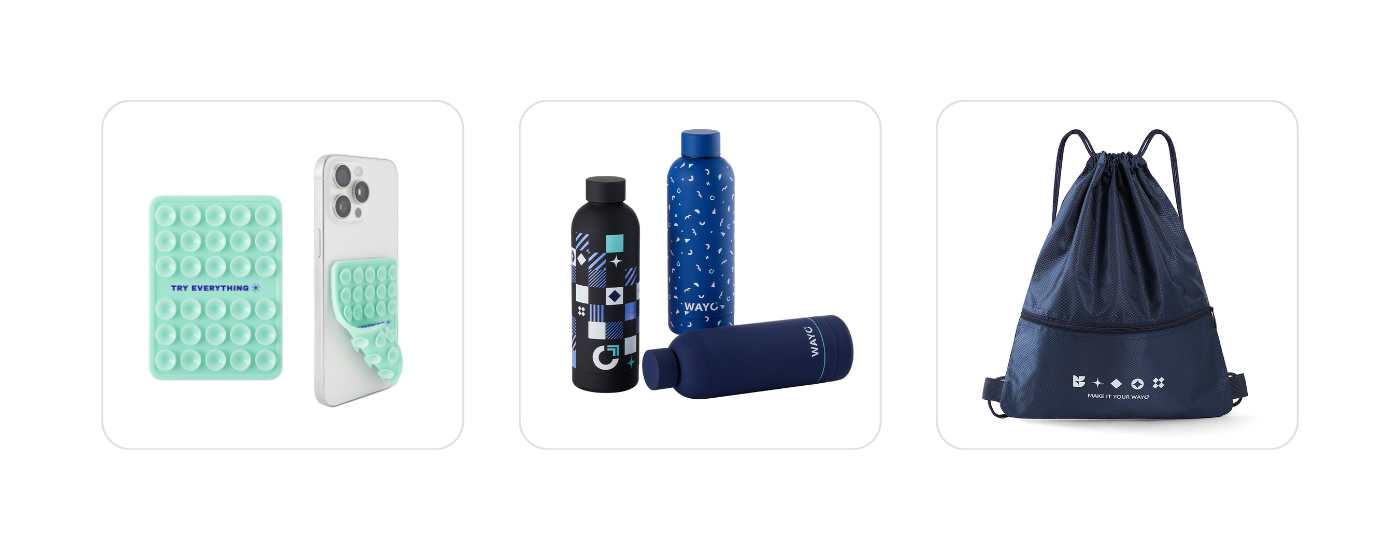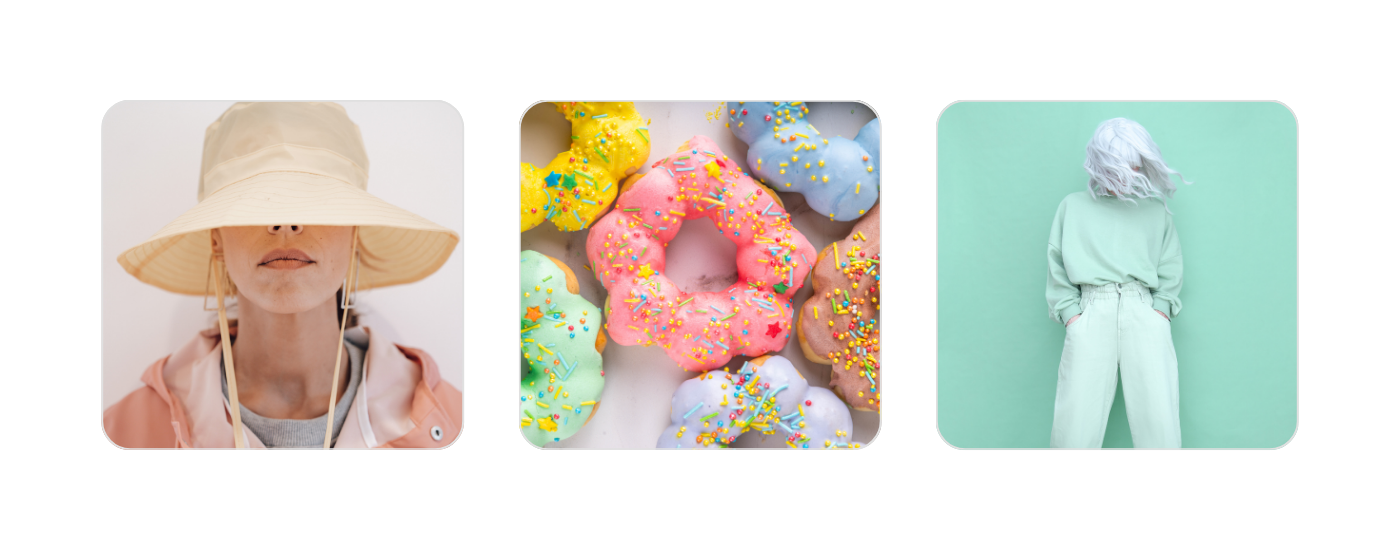
Where to find the best ideas for swag: 7 proven sources

For decades, ordering swag meant flipping through a catalog and putting your logo on whatever caught your eye (or was the cheapest) – in most cases, that usually meant the same pens, mugs, and tote bags everyone else was handing out.
Most brands and organizations today know they can do better. You've probably felt it yourself when looking at yet another page of generic options, knowing that a stress ball with your logo on it isn't exactly going to wow anyone. But how do you elevate your swag?
Luckily, you don't need a design degree or merchandising training – just fresh eyes and the right sources of inspiration. Here are seven unexpected places to spark ideas for swag that people will actually use.
Draw from your color palette and visual identity
Your brand colors are one of the easiest ways to make even the simplest merch feel instantly recognizable. A notebook with pages edged in your brand's accent color, or a tote bag with subtle color-blocking that matches your visual identity, can be just as recognizable as something with your name across the front.
And your palette goes deeper than that one hero color. A bakery’s blush-pink logo might get the spotlight, but look closer and you might find sage-green tissue, cream pastry boxes, maybe even a hint of gold foil. A tech startup’s navy logo might anchor their look, but their slides come to life with softer blues, grays, and a jolt of neon. All of it is part of your brand DNA – and all of it can work beautifully on merch.
For more swag design tips, check out this guide.

Reflect your brand personality
Every brand and organization has a personality. Are you an irreverent startup that uses memes in email subject lines? Are you a premium consultancy with dry wit peppered throughout your content? Or perhaps you’re the nonprofit that radiates warmth and optimism?
Most merch skips over this and goes straight for the safest option of adding your logo on a plain tote. It works, but it’s forgettable. Your brand voice is what makes people remember you, so let it show up on something people use.
Maybe it’s a slogan so spot-on it could live on your homepage, the one-liner that’s become your team’s unofficial motto, or the inside joke that pops up in Slack every week. When those phrases land on a hoodie, water bottle, or tote, they instantly feel part of your brand.
And the product itself can be part of the personality. A consultancy with a polished, premium feel might gift vegan leather notebooks or sleek wireless chargers. A wellness brand could send massage guns or fleece blankets that make “take care of yourself” feel tangible. A team that thrives on friendly competition might order pickleball sets or custom golf balls. When the item and the message work together, your merch stops being “stuff” and starts being a story.
Make your core offering tangible
Here's a simple trick: look at what you do, then think about the stuff people need to do it well.
Coffee roasters figured this out early. It makes sense that they sell mugs – people need something to drink the coffee in. But the smart ones go further: measuring spoons for the perfect scoop, travel tumblers for people rushing to work, maybe even a sleek coffee scale. Every piece connects back to the core experience of making great coffee.
Tech companies can play this game too. If you're building productivity tools, your users are probably juggling laptops, phones, and endless video calls. Enter the branded laptop sleeve, webcam cover, or even a desk organizer.
Upgrade functional tools your audience already uses
Similarly, think about what merch recipients or buyers are already using every day and give them a better version of it.
Charging cables, water bottles, notebooks, and tote bags are great starting points – most people own these, but plenty are cheap, worn out, or just plain ugly. Upgrade them, and you’re solving a real problem while keeping your brand in constant rotation.

Package swag like a product experience
Another way to elevate your swag game is to stop thinking about individual items and start thinking about experiences. What concept can you build around that your audience will also care about?
“Self-Care Sunday” might be a candle in your brand colors, premium tea, and soft socks, all in packaging that feels like a gift you’d buy for yourself. A “New Hire Survival Kit” could bundle a portable charger, good snacks, a coffee mug that keeps drinks warm, and a small succulent, all tucked into a branded pouch they’ll reuse for travel.
This approach works especially well for onboarding employees, welcoming new clients, or trade show swag that doesn’t get left in the hotel room once the event is over.
Learn from other industries
One of the easiest ways to get out of a swag rut is to stop looking at what everyone in your industry is doing and start stealing ideas for swag from completely different industries:
- Beauty brands: They’ve perfected the unboxing moment. Even if your item is practical, elevate it by wrapping it in tissue, placing it in a reusable pouch, or adding a card with “how to use” tips. Packaging is part of the experience, not just a way to ship stuff.
- Food and beverage brands: They turn small moments into rituals. They know coffee tastes better in a great mug, and hot sauce is more fun with a spoon rest you didn’t know you needed. Apply that logic to swag by combining items that make sense together and tell a story at first glance.
- Streetwear brands: They’ve turned scarcity into an art form. You can borrow their “drop” mentality by doing small, seasonal runs in one hero color or limited-edition design.
- Outdoor brands: They know how to make things packable, portable, and ready for real life. Borrow that thinking for event swag that travels well, like a tote that folds up or a blanket that rolls up with a built-in strap.
Get inspired by pop culture and trends
Fresh ideas for swag often come from watching what your audience is already buying, sharing, and carrying around. The key, however, is focusing on the why, not necessarily the what – otherwise, you risk ending up with boxes of merch that feel dated before they’re even out of the shrink wrap.
Take the Labubu craze. Yes, they’re cute keychains, but the real pull is the collectible culture, limited drops, and social shareability. You can borrow that same scarcity factor for a numbered enamel pin or a limited-run colorway without having to design a mascot and turning it into a plush toy.
Some good places to spot these signals include:
- Pinterest Trends: Great for catching early shifts in color palettes, home and lifestyle aesthetics, and seasonal buying moods before they hit mainstream retail.
- Google Trends: Shows what people are actively looking for right now – useful for spotting product types or pop culture tie-ins gaining traction.
- TikTok’s Creative Center: Surfaces trending hashtags, sounds, and products that can hint at what’s about to flood your audience’s For You Page.
- Instagram: A quick scroll can reveal recurring styles, props, or colors in posts from your niche.

Feeling inspired by these ideas for swag?
It’s easy to feel stuck flipping through the same generic swag catalogs where half the products feel dated, overpriced, or just plain boring. You already know nobody’s clamoring for another pen or stress ball, but finding something better isn’t always easy.
That’s why we built Wayo. We wanted merch that actually felt worth keeping, without the headache of chasing down overseas suppliers or settling for “good enough.”
Our catalog is packed with products you won’t see everywhere else. And if you’re ready to go even further, our AI sourcing agent, Nory, can help you find manufacturers to create something truly one-of-a-kind.


